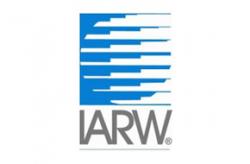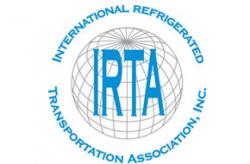Disruption in The Supply Chain
Bottlenecks at ports create ripple effects across the country and around the world.
From choked ports on the West Coast to packed rail yards in the Midwest, the U.S. supply chain is straining under record-breaking demand because of growinge-commerce, worker and truckchassis shortages and a shift to material goods as Americans avoided travel and social outings over the course of the pandemic.
Congestion at U.S. ports, particularly Los Angeles and Long Beach on the West Coast, and a shortage of truck drivers have left some foreign food manufacturers struggling to get their cargo abroad. Ships continue to take weeks, rather than days, to unload at the ports, and backed-up shippers are desperate to return to Asia to pick up more goods. Space has been particularly hard to find near U.S. ports as shippers and logistics companies seek out warehouses to store containers and goods. The squeeze on distribution space is adding to the broader congestion in supply chains, from the tight container shipping capacity to backups at inland rail hubs, that has locked down inventory restocking efforts and dragged down economic recovery efforts during the pandemic. The chokepoint on the West Coast of the United States is one of many bottlenecks in the complex global supply chain web that is contributing to delays, shortages of many goods and faster inflation worldwide.
At the Heart of the Jam
The Biden administration has been under pressure to clear logjams in the supply chain and ease inflationary pressures. Actions have included brokering agreements to shift to round-the-clock operations at the ports of Los Angeles and Long Beach – the biggest gateway for imports – and pledges from retailers to expand their own shipping. In late October, the ports of Los Angeles and Long Beach, which account for 40% of sea freight entering the United States, announced new fees aimed at ocean carriers to abate the intensifying logjam of cargo ships. By early January, the ports had yet to implement the container dwell fee citing a combined decline of 47% in aging cargo on the docks and significant improvements in the supply chain. “The current supply chain crisis has had many contributing factors, but it essentially comes down to a single cause – the COVID-19 pandemic,” says Port of Long Beach Executive Director Mario Cordero. “The contributing factors are the surge of cargo, high number of unscheduled vessel calls, a supply chain workforce impacted by COVID-19 and workplace accommodations throughout the supply chain that can limit capacity.” Cordero adds that the congestion is not unique to the twin ports as many of the current supply chain challenges were already occurring prior to the pandemic but are now magnified due to high cargo volumes. “In spite of the best efforts of terminal operators and longshore workers – 50% more ships are being worked at once than before the pandemic – terminals remain beyond full capacity as evidenced by tall container stacks crowding the tarmacs and the backlog of ships at anchor,” says Phillip Sanfield, Spokesperson, Port of Los Angeles. Sanfield adds the situation will likely persist until the import surge subsides and the flow of containers out of the terminals to inland locations and store shelves improves.
In an interview with Bloomberg in midDecember, Harbor Trucking Association Chief Executive Officer Matt Schrap said restrictions on empty-container returns at major ports is the top issue that needs fixing to help ease U.S. supply chain bottlenecks. He said they are storing thousands of empty containers and chassis that cannot be used to move the imports. According to port regulations, trucking companies have to make an appointment to pick up a container off the dock. Trucks need a chassis – which are hooked to the vehicles – to collect the import, but unless they bring an empty container to free up the chassis, they are unable to move the import, according to Schrap. And he added that true round-the-clock port operations are not yet in place.
Too Many Containers Not Enough Chassis
“The Ports of Los Angeles and Long Beach have policies in place that have made a difficult situation worse,” claims Larry Rauch, President, Los Angeles Cold Storage. “For instance, chassis and containers are separated and kept in different locations and separate appointments are required to take each back. If you are not able to get one of those appointments, then you’re stuck with the container until you can get it back.” Not being able to return containers creates challenges for all types of warehouses as drayage companies have no place to put containers and leave them at the warehouse dock or in some cases on city streets. When containers do become free at the ports, Rauch says often there are no doors to receive them at the warehouses. “Warehouse facilities are so backed up, containers have to be constantly shifted around to make room for incoming trucks.” Another point Rauch makes is that the truck drivers get paid by the container. “Once a driver could make three trips on a good day from port to warehouse, but now it’s so congested the driver gets one turn,” Rauch says. “The drivers’ income is down and it’s disincentivizing at a time when we’re experiencing such a serious shortages of truck drivers.”
Rauch says solving supply chain disruptions by opening a port 24 hours a day works only in theory. “The hours may be extended but the problems are all the same – no chassis, backed up containers, driver shortages, driver hours of service. To operate effectively, all links in the supply chain – ports, warehouses, truckers, logistic companies, container and chassis storage yards – have to work in tandem. But the supply chain problems will not be fixed if only one link – the ports – is operating 24/7 when other links in the supply chain are not able to operate around the clock.”
The Ripple Effect
The increased volume of imports is creating challenges all through the supply chain including the difficulty in getting an ocean carrier booking. “The bookings are so hard to get and the warehouses overseas so full that when shippers can get a booking, they must take advantage of the opportunity. As the imports grow, so do the number of containers holding those imports and the number of ocean carriers needed to convey those containers of imports," says Rauch. All through the system, at every point, shortages and challenges of all kinds are created, Rauch notes, and says pallets are one example of the impact of supply chain disruptions on the warehouse. “There is a shortage of pallets throughout the supply chain and their price has gone up significantly driven by the increased demand and the rising cost of wood and labor.” Another example of supply chain shortages impacting warehouses is the cost of petroleum-based shrink wrap as the price of oil has gone up. Also, a shortage of liquid CO2 led to a scarcity of dry ice that some warehouse operations use in shipping, Rauch says. Like many other companies, Rauch says they are experiencing labor issues from retirements and team members leaving for other jobs. “We had a lot of longevity and might hire two people a year, but we hired more people in 2021 than in the past five years. We’re also supplementing pay because our people are working particularly hard.” The ripple effect of the bottleneck at the California ports is being felt everywhere, including in the Pacific Northwest of the United States. “We have been providing breakbulk (palletized) ship loading and unloading services at record levels due to the containerized supply chain back-up issues around the world,” reports Doug Thomas, President and CEO, Bellingham Cold Storage in Washington State. “We are handling new and unusual cargos, many of which we have never accommodated before.”
He adds that to handle the volumes, the company has been working two 12-hour shifts, essentially seven days a week since early August 2021. He says a big problem currently is the lack of qualified forklift drivers that are interested in working. “We have the same team working more hours, so we are providing more pay, more incentives and more hot meals for the crews.” It is not just West Coast temperature-controlled warehouses that are feeling the impact of the surge of container imports causing bottlenecks at the Southern California ports. In the key Midwestern freight hub of Chicago, Illinois, where many thousands of containers are switched each month, Union Pacific and BNSF Railway have limited container shipments into their overpacked freightswitching terminals. As a result, some cargo owners and logistics companies have sought to divert shipments by truck or rail to other Midwestern transfer points, raising costs and adding new complications to already snarled distribution networks. “We believe every industry and household are seeing inflation in the goods and services they are purchasing, and we are certainly seeing costs and lead times increase in many of the services and goods we purchase,” says Scott Albers, President, Nor-Am Cold Storage, which has temperature-controlled facilities in the Midwest. “In response to this, our company must decide whether to alter pricing, adding to the inflation trend, or allow it to eat into margin.”
Albers points out their customers are fighting the same labor attraction and retention issues as they are. “If our customers cannot attract and retain sufficient labor for production, it will have a ripple effect in the inventories that we carry.”
Building in Resiliency
“Our dockworkers have kept this country’s supply chain functioning since day one of the pandemic. A well-trained workforce is the key to managing the unprecedented cargo volumes we are seeing today,” says Cordero of the Port of Long Beach. “Only a small percentage of the nation’s terminals are automated; ports must find a way to handle the cargo increases in the near term.” To address the systemic lack of available chassis, Sanfield with the Port of Los Angeles says measures to reduce terminal and street dwell times must continue, including facilitating empty returns, dual transactions and activation of on-dock, near-dock and off-dock sites that support decoupling of loaded and empty containers from chassis. The port will also work with chassis providers to inventory chassis in terminals and take measures to put out-of-service chassis back into circulation. “Long term, we would like to see chassis included in the list of excluded products from Section 301 tariffs,” says Sanfield. “The port also supports increasing domestic chassis production by addressing workforce shortages, exploring use of the Defense Production Act and other supply side measures.” To bring into effect full utilization of available gate hours making the port 24/7, Sanfield says enhanced coordination between cargo owners, marine terminals and carriers is needed to increase the rate of productive gate appointments per shift, including accommodating empty returns.
He says the port recently announced a pilot program called Accelerate Cargo LA to accomplish this directly. “The port supports bay-wide information sharing and will advance visibility of key data, such as empty return location and early return date,” Sanfield says. “Mid to long-term, the port will move towards enabling interconnectivity across all nodes and from origin to destination, integrate with national freight data architecture and use data to assist prioritization of public investment towards improvement of system performance and resilience.” Thomas says three things will help mitigate future supply chain disruptions: automation, automation and automation. “It would also be helpful if unemployment was harder to qualify for when there are so many good paying jobs available,” Thomas says. “Federal and state subsidies for rent, utilities and rent forgiveness have been exacerbating the problem of encouraging potential workers to get back on a job.” Albers says in the Midwest, labor is also the key driver. “Currently, we show more open employment positions than are on unemployment records. There has always been competition for labor, but now people have made adjustments in their lifestyles and their expectations of their careers,” he says. “The challenge is for employers to recognize this and respond in ways that are meaningful to people who are on the fence about returning to the workforce.” Albers believes it may be a little choppy in the short term, but the supply chain is resilient and will adapt to the market changes to serve both customers and consumers.
The Horizon
Cordero says the ports complex has seen a surge of cargo that began in July 2020 and could see this persist into the beginning of 2022. “As we reduce long-dwelling import containers and empties for export on the terminals, the ports are swiftly making progress on catching up. However, the disruptions are affecting the entire supply chain, not just the ports, so that’s why we are pleased to see the U.S. Port Envoy and the Biden administration working on the issues that created this situation.” Rauch does not believe anyone will see an improvement in the current supply chain situation until mid-2022, at the earliest. “As long as American consumers continue to purchase imported items, the imports are going to continue to come, and unless the ports make significant changes, the supply chain bottlenecks will persist. The unknown factor in this scenario is inflation and how the consumer will respond to rising prices.” “I’m estimating that we will continue to see this level of supply chain issues for at least 24 months,” Thomas says. “The upcoming longshore negotiations will be interesting to watch as this could extend my estimate to 36 months or more if the unions continue to feel like they have the leverage to shut everything down.” “‘When’ is the million-dollar question,” Albers says. “If you listen to the market and the experts, they are predicting a recovery by the third or fourth quarter of 2022, but a lot can happen between now and then.” Even if the optimists are proved correct in detecting a peak in the gridlock, the global trading system and the resilience of supply chains will continue to be stretched for months to come.
ALEXANDRA WALSH is a Senior Publishing Consultant with Association Vision and Editor-In-Chief of COLD FACTS. EMAIL: awalsh@associationvision.com
Source: Cold Facts January/February 2022 issue



